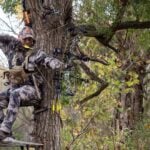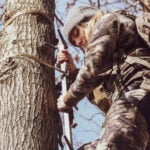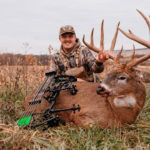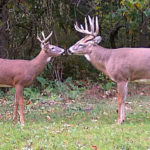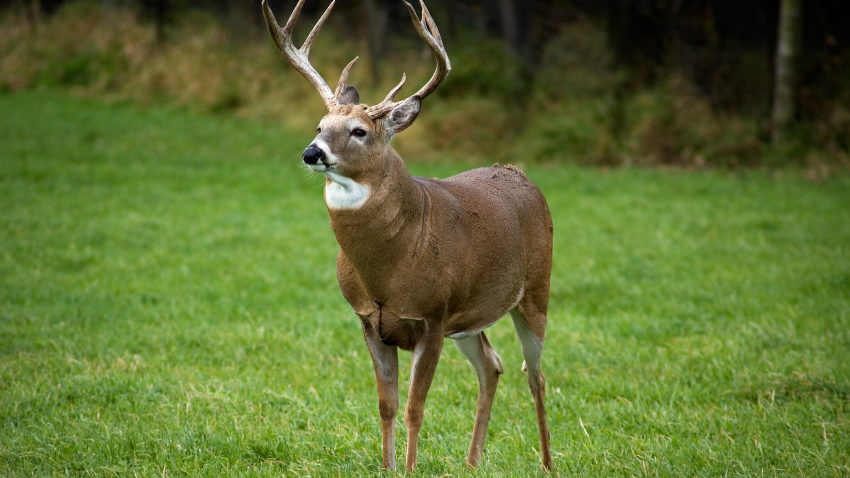
The three most important decisions you’ll make this season are: 1. should I shoot? 2. When should I shoot? 3. Where should I aim?
Unfortunately, the answers are often the result of surprisingly little thought, maybe no thought at all. To be most effective on deer, you have to come up with a set of ground rules for dealing with every possible shot you will face while hunting.
THE MAXIMUM RANGE QUESTION
This is possibly the most common dilemma that bowhunters face. The buck is crossing the ridge but he’s out there quite a ways.
Sure, you can grunt at him and hope he comes closer, but he’ll probably just stop and stare – then what? Do you have concrete criteria for deciding when a buck is out of range? You should.
Don’t leave that important decision to a “mood of the day” reaction. You have to know your maximum range under real hunting conditions and stick to it.
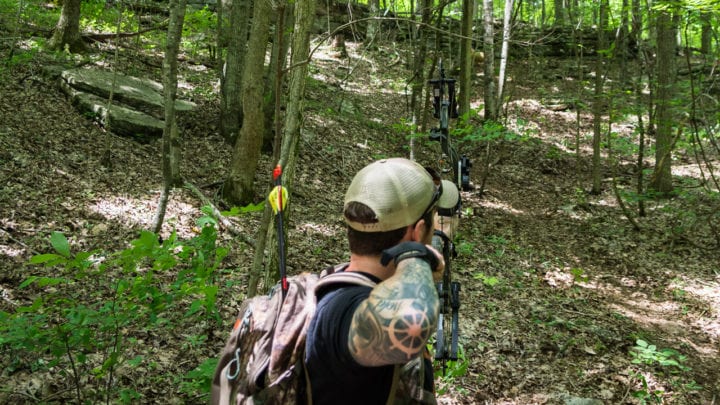
Knowing your maximum range is both defensive and offensive. Not only does it keep you from taking shots you shouldn’t, it encourages you to take shots you should.
Since sticking to your criteria keeps emotion and excitement from ruling the day, you will be much more likely to take shots that are within your ability even when your heart is in your throat and your confidence has turned to mush in the face of a big buck.
I’ve had this happen enough times to know that if I had to rely on my feelings during the moment of truth to dictate whether or not I should shoot, I’d take a lot less game. It is natural to feel tense in this situation, but you can still make a good shot.
I hear many stories of bowhunters who locked up when things got tight. (I’ve done it myself.) They lost faith in their abilities at a critical moment and weren’t prepared mentally to execute the shot.
Ignore your emotions and rely on your proven skills. Regardless of how you feel, stick to your pre-planned shot selection criteria. If the buck is within your carefully considered maximum range and the shot is clear – take it.
Bear in mind that most bowhunters aren’t as deadly in the real world of hunting as they are on the range. With extra clothing and broadhead arrows, they shoot differently.
Get out and determine how accurate you really are. Don’t take five arrows to warm up. Grab one hunting arrow with a broadhead, put on your bulky camo jacket and a facemask and climb into a tree stand or ground blind.
Take one shot at the target. If you do that a few times each day for a week, you’ll know how accurate you really are.
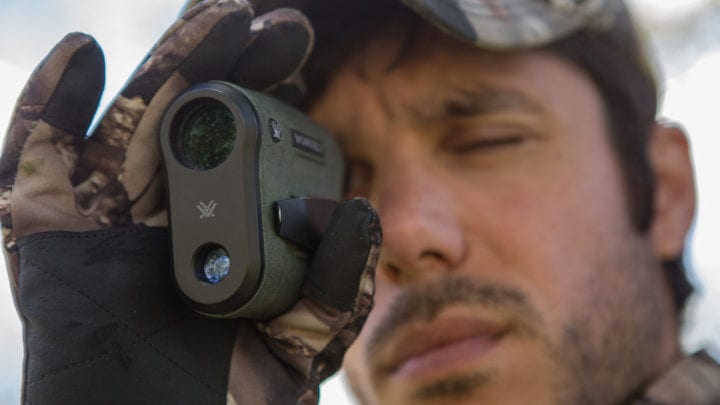
If you know the exact range of the shot, you can shoot farther with greater effectiveness than if you have to estimate the distance.
When estimating distance, most bowhunters have maximum effective range on deer sized game of less than 30 yards. When using a rangefinder, it stretches beyond 30 yards.
A realistic maximum range for bowhunters who practice often is about 25 yards when they don’t know the exact distance, and about 35 yards when they do.
This skill level corresponds with the ability to hit a paper plate every time at 40 yards on the range. Get out and determine your own maximum range. When the moment of truth arrives, stick with reality not emotion!
MOVING TARGETS
Whitetail bucks are generally searching and cruising during the rut. Moving targets are common. During the last six seasons I’ve taken about 30 whitetails with a bow (some were does) and a dozen other big game animals of various species.
Of that number, nearly a third were walking when I took the shot. I am obviously more inclined to take moving shots than some bowhunters, but that is because I have a lot of experience with them. You need to know what you will do before facing the situation for real.
The question of whether or not you should take a moving shot is never easy to answer. I’ve had to live with poor decisions both ways.
For example, I missed a great buck one evening at just 15 yards because I didn’t stop him. Light was fading and it was hard to see through the peep. I panicked as he neared the end of my shooting lane and I raked the trigger.
Clean miss. Had I only stopped him it would have been easy to pull everything together and shoot that buck.
Then just two weeks later, I had a similar situation so I decided to stop the buck. I grunted softly and the deer took one more step and turned to stone right behind a dead tree.
No shot. He stood there for several long seconds looking for the source of the sound until he got nervous. Luckily, he walked away slowly enough for me to get an arrow into his lungs, but he could have easily gotten away. The decision of whether to stop a walking buck is not a simple one. You need a good plan.
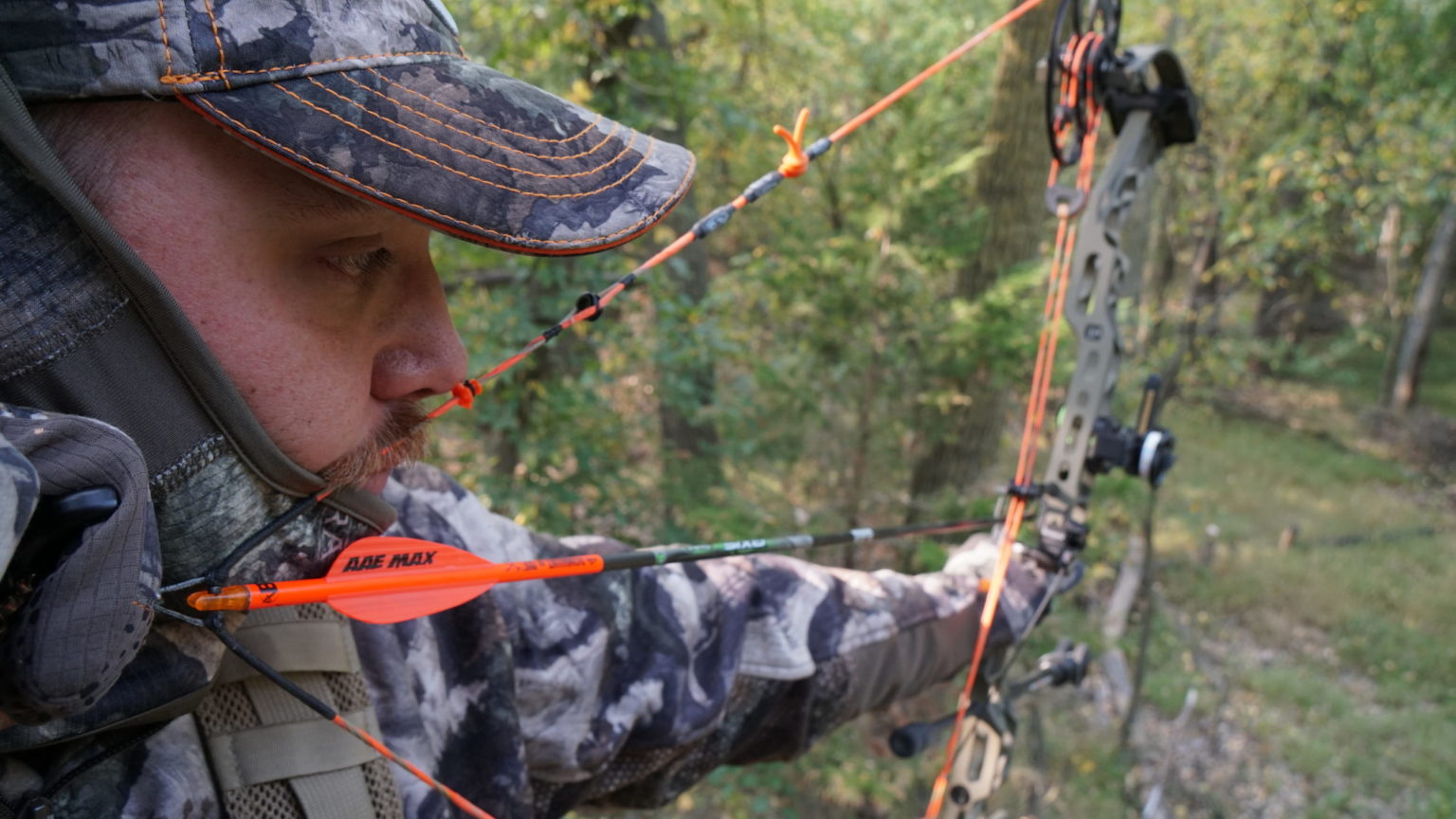
Since that season, it was 1995; I have thought about this subject many times and believe I now have a solid plan to handle every moving shot.
First, I won’t stop a buck when I have narrow shooting lanes. Since I can’t always be assured that the buck will stop exactly when I bleat or grunt at him, I need a shooting lane that is at least six feet wide to consider stopping him.
This is the single reason that many of my shots have been at moving deer. If my lane is wide enough, I’ll stop any deer that’s walking through. If it’s not, I’ll remain quiet and shoot the animal on the move (based on the following restrictions).
Second, if the animal is moving faster than a steady walk, or is more than 20 yards away, I don’t even consider taking a moving shot. Timing becomes too difficult under these conditions. I’ll stop him and hope for a hole that allows me to get an arrow to his vitals.
Finally, and most importantly, you shouldn’t consider taking any kind of moving shot unless you’ve first practiced it during the off-season and have a good feel for the lead required. As a starting point, at 15 yards you need to lead a casually walking buck about five to six inches.
TOUGH ANGLES
If you’ve ever had a buck walk straight toward your stand you know how quickly excitement can turn into panic. When are you going to draw and when are you going to shoot? What if he doesn’t turn?
The head-on buck is one of the toughest dilemmas in bowhunting. These are the decisions that produce sleepless nights. Straight-on, straight down and straight away are all mind benders. Short of doing everything possible to prevent them from happening the first place, here’s the best way to handle these tough shots.
Straight-on shots offer nothing beyond the prospect of poor penetration and the likelihood of a glancing hit. I know some deer hunters who routinely take straight-on shots when hunting on the ground.
They aim for the soft spot between the shoulder and the brisket. It is definitely a close-range opportunity reserved for experts who shoot arrows carrying lots of kinetic energy and equipped with broadheads built for penetration.
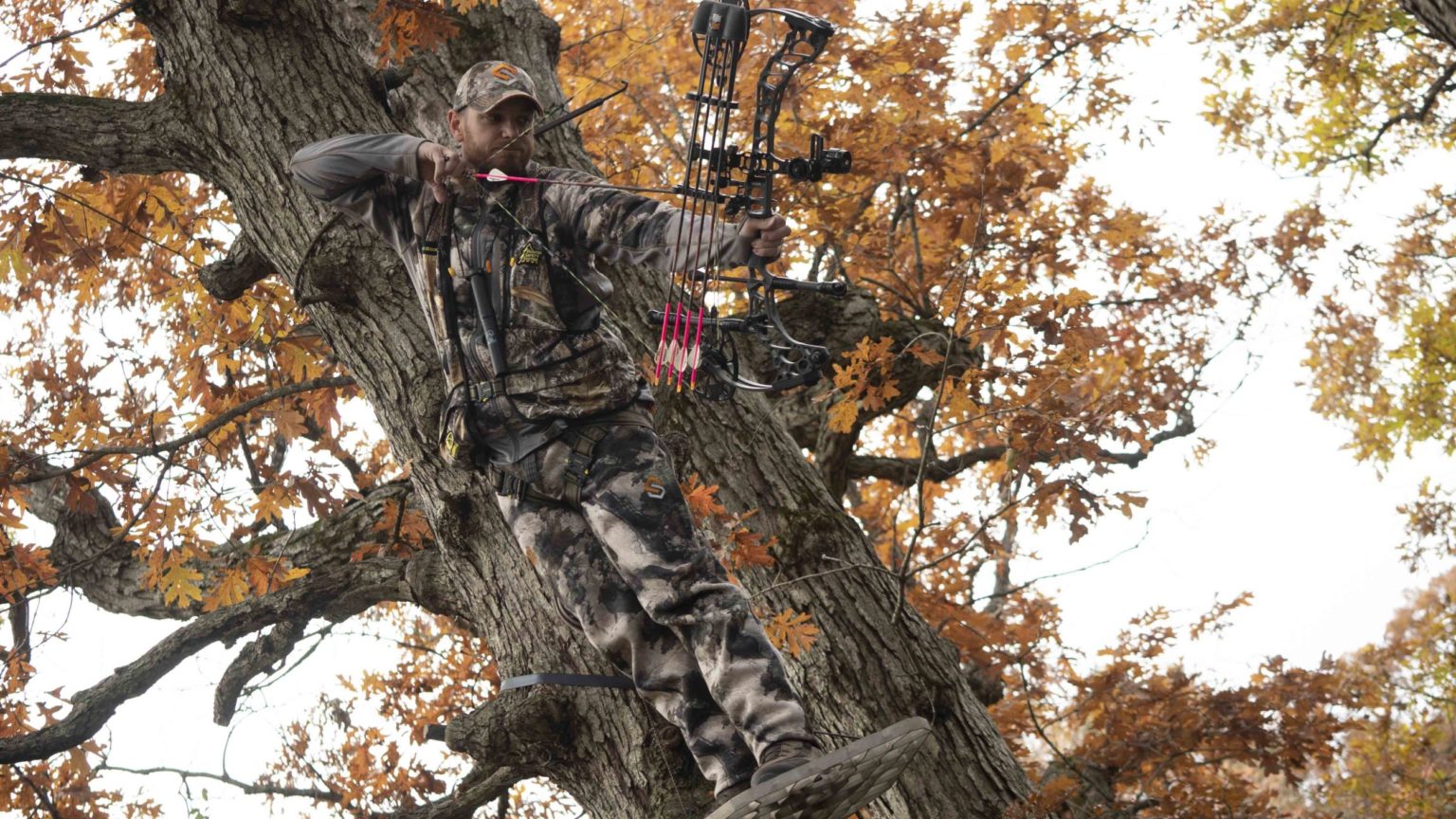
Straight down shots from a tree stand are no good: too often they produce only a single-lung hit and no exit hole.
By the way, the single-lung hit is not always quickly fatal and produces too many lost animals. It is best to pass on this shot in the hopes that the animal will change its angle as it walks away.
The straightaway shot is also very marginal from an ethics standpoint. The cards have already been dealt in that hand, and most times, you should just fold them and hope for better luck with the next deer. Again, there is an opportunity for the expert archer.
If you are a good shot, it is possible to make an ethical and humane kill on a buck that is going straightaway (assuming you’re in a tree stand). At a range of about 10 yards, the arrow’s path into the heart/lung area also includes the liver.
Even if you only hit one lung and miss the heart, the addition of the liver to the wound channel will result in a very quick kill.
If you decide this is a shot you’ll try, be sure to aim far enough back. Keep in mind that the liver is located behind the lungs.
Shoot off to the side of the spine to avoid the heavy tissue around the backbone and choose a shot angle that will produce an exit that’s right between the front legs, in the middle of the brisket.
QUARTERING TOWARD
If you wait a few seconds, the quartering toward angle will quickly change to broadside at closer range. It is always better to be patient with a quartering toward shot than to force it by shooting early.
However, sometimes you don’t have the luxury of time. Maybe the animal is heading straight for your scent stream, or maybe he will pass behind a screen of brush if you wait. In these cases, you may choose to take a quartering-toward shot if everything is perfect.
I’ve been forced to take slightly quartering-toward shots on a few occasions.
In all cases, I had no other options and couldn’t wait for a broadside angle because of the conditions at hand. All of them resulted in good hits.
For this angle, I aim as close to the back of the front leg as possible. In fact, I basically aim for the bone just above the main joint (what some call the “elbow”).
But, I only take this shot if the range is 20 yards or less, and the angle is slight. On top of that, it helps to time the shot so the front leg is forward to expose more of the vital area.
It is an unforgiving shot with a small margin for error that requires you to know exactly where your bow is shooting.
UNDER AND OVER
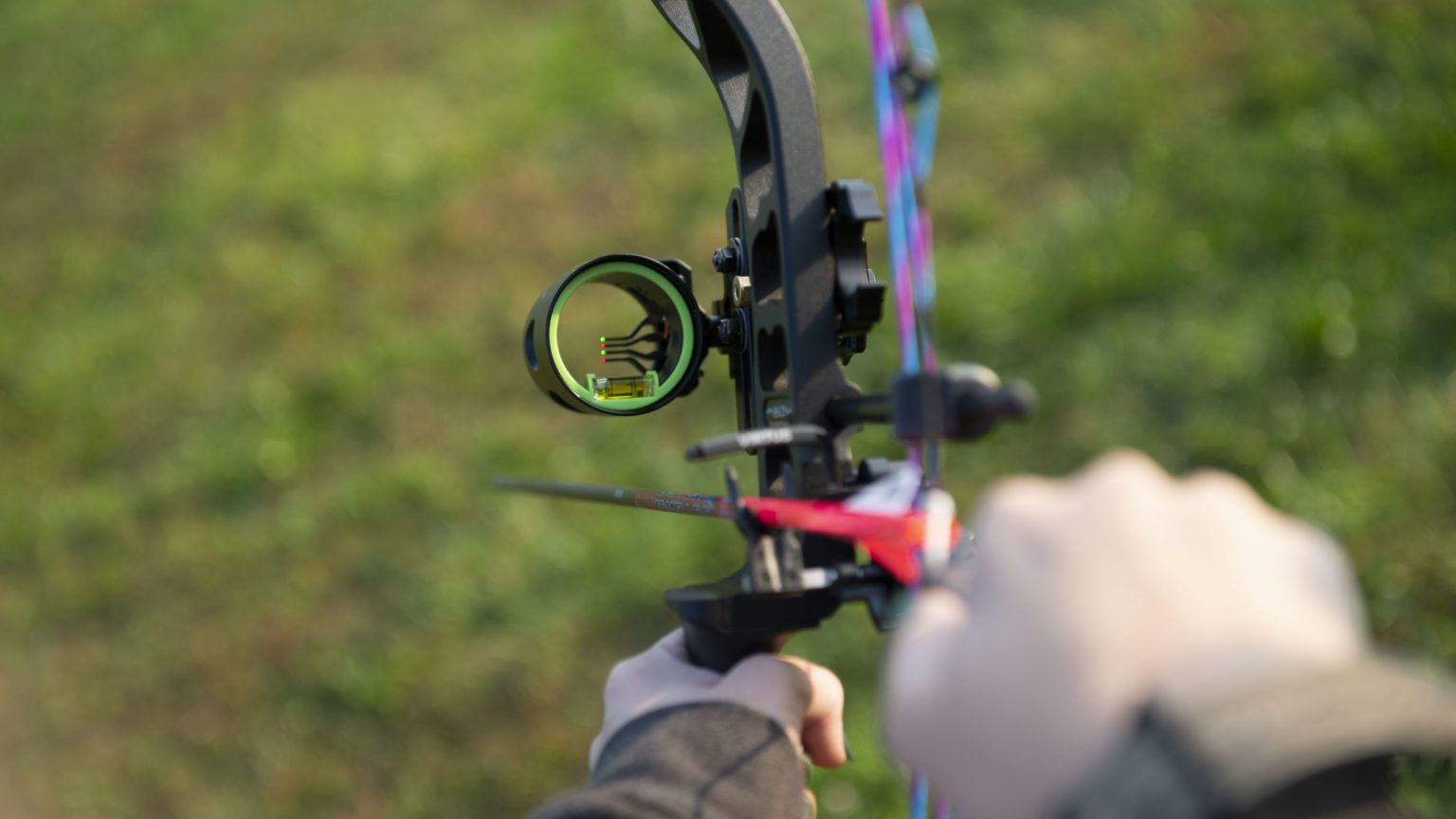
I’d watched the buck for nearly an hour as he bred a doe and then followed her slowly in a big circle all the way around my stand. He was a great 10-pointer that would score in the low 160’s – a buck I really wanted.
Finally, the doe passed through an opening at a range of 37 yards. He’d be in the same opening in seconds.
I dropped the rangefinder, drew my bow and bleated loudly with my mouth when the buck’s chest was in clear view. He was now staring straight at me. I put the 40-yard pin a little low and pulled the trigger. It should have been perfect.
Crack, zing, the arrow deflected just over the buck’s back. He bounded away and left me stunned. I pulled the bow up again, put the 40-yard pin roughly where it had been. The shot was wide open. What could I have hit? I knew I hadn’t flinched.
Then I looked at the 20-yard pin and nearly cried. It was perfectly in line with the stubbed-off end of a finger-thick, freshly broken limb halfway to where the buck had stood.
Had I looked at the 20-yard pin to make sure it was clear before taking the shot I would have realized I had a problem and I could have crouched ever so slightly and opened a clear path.
Granted, that’s a lot to ask when a 160-buck is staring at you, but those are the kinds of assessments you have to be able to make if you hope to be consistent during the moment of truth.
You can also use the same sighting trick when shooting over obstacles.
Assume a buck is standing 35 yards away with a brush pile halfway between you and him blocking most of his vitals. Maybe it is tall grass, a common occurrence when hunting from a ground blind. Do you have a shot?
The only way to find out is to sight the bow on the buck’s chest as if you were going to shoot him and then look at your 20-yard pin. If it’s above the brush your arrow will loop right over it without touching a twig.
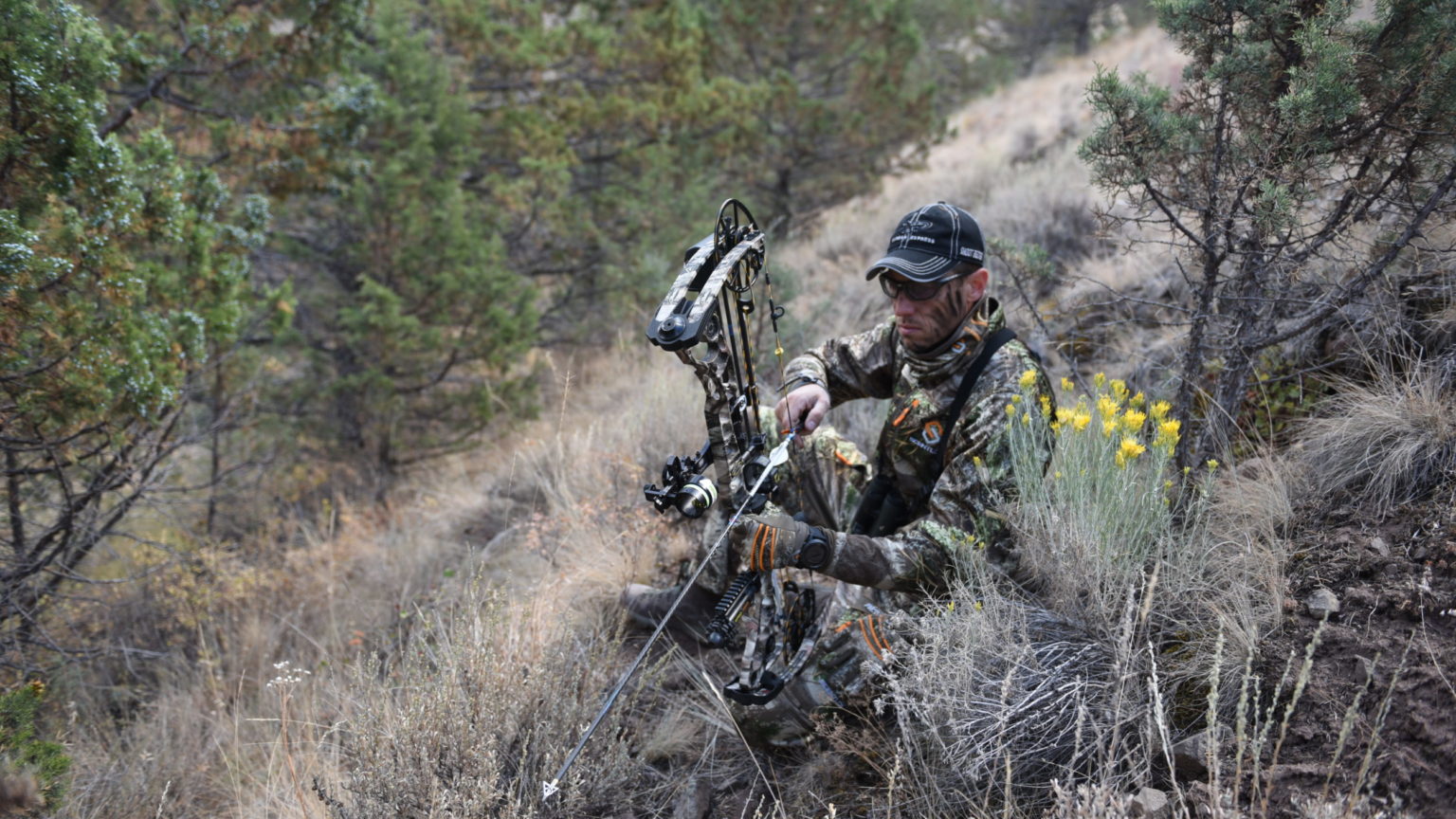
SHOOTING THROUGH BRUSH
Broadheads, both mechanical and conventional, will snag grass and thin brush when you try to shoot through them. For this reason, you should never try to make a “brush buster” shot with a bow and arrow.
However, if the brush is very thin and close to the deer – within a yard or two – you can ethically take the shot. Any deflection will be very slight when it occurs that close to the animal. If the brush is any farther from the deer, don’t take the shot.
A clear, focused mind is a tremendous asset during the moment of truth. It will handle demands much better than one plagued with questions.
Spend a little time before the season sorting out which shots you’ll take and how you’ll handle them and your actions will be more decisive when the chips are down.

